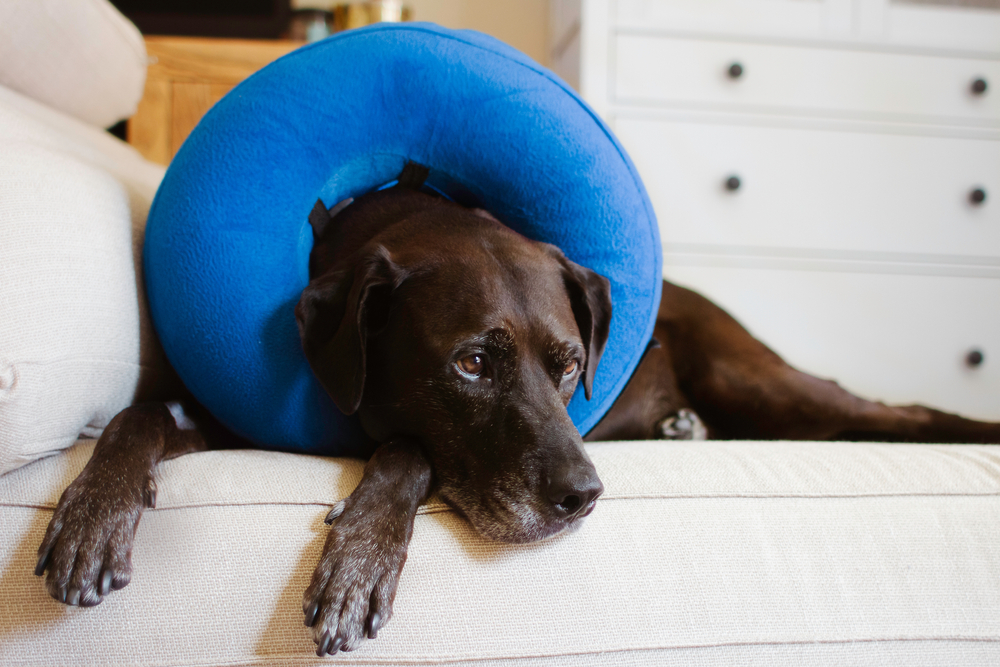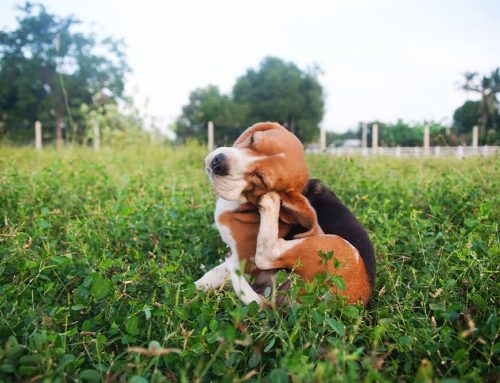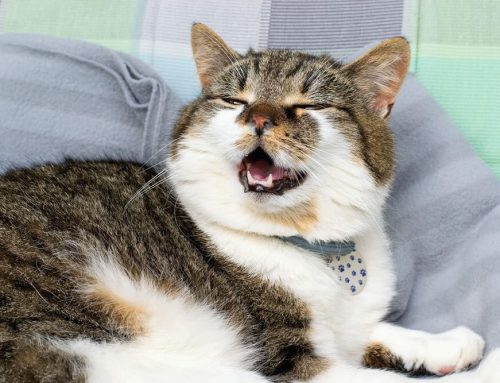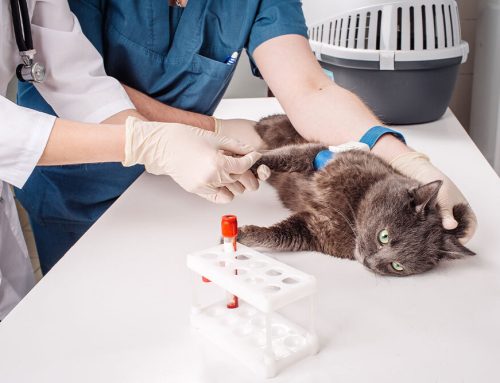Your pet has been due for their dental cleaning for some time, but you’ve been putting it off because you’re worried about anesthesia. However, your furry pal’s breath is so rancid, you are avoiding their kisses, and you know their inflamed gums must be painful. But, the day of their dental cleaning has arrived, and you are still worrying about putting them under anesthesia. How will they be kept safe? What actually happens when your pet goes through an anesthetic procedure? What can you expect during their recovery period?
To answer these common questions about anesthesia safety for pets, our Emerald Animal Hospital team has woven a story about a fictitious pet undergoing a real anesthetic procedure. Read along as Murphy the black Labrador has a dental cleaning and tooth extraction, and learn how our team strives to keep him as safe as possible.
Murphy’s anesthetic experience
Despite Murphy’s advanced age for a large-breed dog—he’s a wizened 10 years old—he still wants to chew like a young pup. Murphy is always so eager to get his jaws on anything sturdy enough for his power chewing, he will gnaw on sticks, rocks, and the occasional squeaky toy. Unfortunately, he may consider himself a power chewer, but his teeth actually are not up to snuff, and he recently fractured his upper fourth premolar, the carnassial tooth. The best remedy for a broken tooth is extraction, so we scheduled Murphy for surgery, along with his annual dental cleaning.
On the day of Murphy’s procedure, our team first checked him in. We managed to accurately weigh the pooch—despite him being extremely wiggly—to ensure our medication calculations were accurate. Next, we performed Murphy’s pre-anesthetic exam, which entailed listening to his heart and lungs, taking his temperature, and checking his gum color to ensure his vital signs were normal. We also pulled some of his blood to run pre-anesthetic blood work, including a complete blood count (CBC) and blood chemistry profile to evaluate organ function, and to check for anemia, infection, inflammation, or clotting issues. We use the information from pre-anesthetic testing to formulate a customized anesthetic protocol. For example, Murphy showed increased liver enzymes on his blood work that indicated some liver dysfunction. This situation is common in older, overweight dogs like Murphy, and requires that we choose anesthetic agents that do not impair liver function further. We also adjust our dosages, since the liver metabolizes many drugs and increased side effects can result when those drugs are used with a poorly functioning liver.
Once we devise Murphy’s anesthetic protocol, we place an intravenous (IV) catheter, which grants instant venous access in case of an emergency, and allows us to administer life-saving drugs should Murphy’s blood pressure decrease or his heart rate drop. In addition, we use an IV catheter to induce anesthesia and administer fluids that help Murphy’s body flush out anesthetic agents while bolstering his blood pressure and ensuring he remains hydrated.
After we pre-medicate Murphy with a cocktail of pain medication and sedatives, we administer flow-by oxygen to boost his oxygen levels before we induce general anesthesia. We also place monitoring equipment, including a blood pressure cuff, ECG clips, and a pulse oximeter probe. By monitoring early, we can carefully watch Murphy’s response to general anesthesia, and compare his vital signs to his pre-anesthetic signs throughout the procedure.
Next, we induce anesthesia and place a breathing (i.e., endotracheal) tube that allows us to administer 100% oxygen and anesthetic gas to keep Murphy unconscious. Throughout this sensitive time, our team closely monitors Murphy’s vital signs using our equipment, experience, and hands and eyes. Murphy appears stable, and all his vital signs are within normal limits for an anesthetized dog of his size.
Since we will be extracting a tooth, we administer local anesthesia, which will help prevent a pain response, before we proceed with dental charting or cleaning to ensure the anesthesia has time to take effect. While we take dental X-rays and examine Murphy’s mouth for other problems, we keep a close eye on his monitoring equipment, and frequently check his anesthetic depth to see if his anesthetic gas dose needs adjusting.
Half an hour into Murphy’s procedure, his heart rate drops to 50 beats per minute. This is low compared with his pre-anesthetic rate of 96, but our team is well-trained and highly educated in anesthesiology and physiology. They expected this heart rate decrease because of an anesthetic agent in Murphy’s protocol, and understood that a low heart rate was perfectly acceptable—to a point—provided the blood pressure remained at an ideal level. Fortunately, Murphy’s other vital signs were great, no emergency measures were needed, and his procedure is uneventful.
Once his fractured tooth is extracted and his teeth cleaned, Murphy is recovered from anesthesia. We monitor his vital signs throughout his recovery period, leaving his breathing tube in place until he can swallow on his own. In a few short hours, Murphy is standing and ready to head home to his family, pain-free and comfortable from his balanced, customized anesthetic protocol.
We understand that pet owners worry about the anesthetic process, and we hope Murphy’s story has eased some of your fears. Let our Emerald Animal Hospital team answer your questions and allay your concerns about your pet’s anesthetic procedure—give us a call.









Leave A Comment